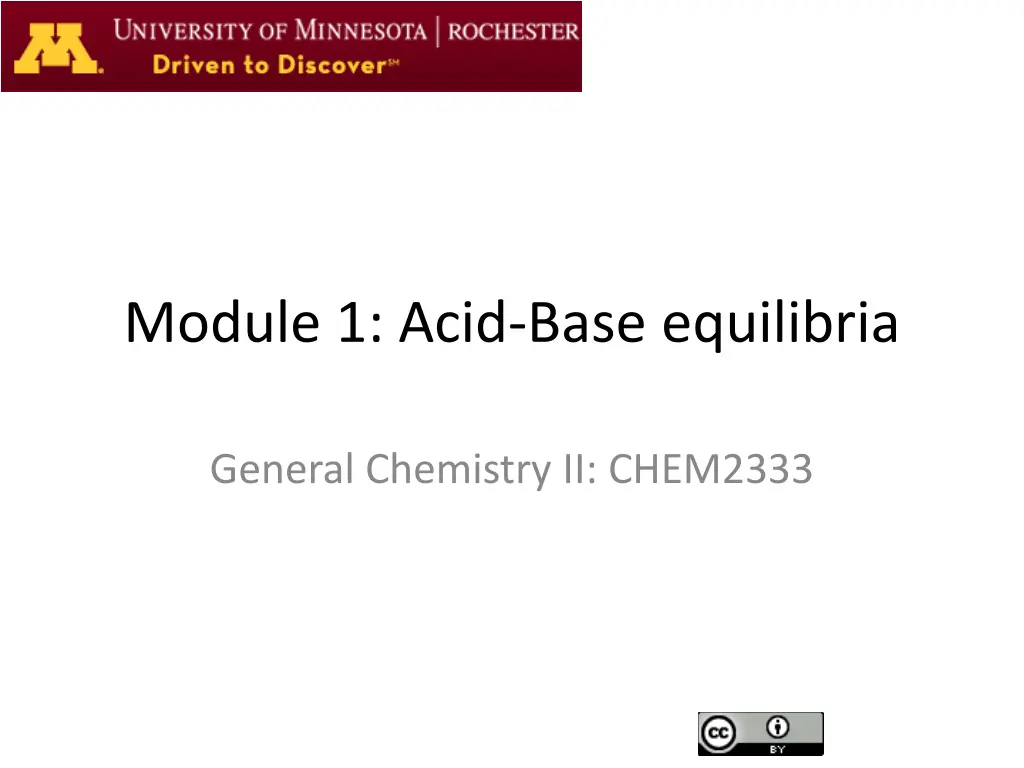
Acid-Base Equilibria: Titrations and More
Explore various titration scenarios involving acids and bases in this chemistry module, including polyprotic acids, bases accepting multiple protons, and mixtures of acid/base species. Learn how to analyze titration curves, calculate pH at equivalence points, and determine the final pH of complex mixtures.
Download Presentation

Please find below an Image/Link to download the presentation.
The content on the website is provided AS IS for your information and personal use only. It may not be sold, licensed, or shared on other websites without obtaining consent from the author. If you encounter any issues during the download, it is possible that the publisher has removed the file from their server.
You are allowed to download the files provided on this website for personal or commercial use, subject to the condition that they are used lawfully. All files are the property of their respective owners.
The content on the website is provided AS IS for your information and personal use only. It may not be sold, licensed, or shared on other websites without obtaining consent from the author.
E N D
Presentation Transcript
Module 1: Acid-Base equilibria General Chemistry II: CHEM2333
Module 1 Module 1 Session 4 1. Video 1: Overview of titrations 1. For titration of bases are we plotting pH or pOH? 2. For titration of bases: Is the Henderson-Hasselbach equation still valid? Is it pKa or pKb, is it pH or pOH? 2. Video 2: Titration of polyprotic acids with strong bases 1. The approximate titration curve of H3PO4 2. Tricks to find the pH at intermediate equivalence points 3. Video 3: Titration of bases that accept more than one proton 1. The approximate titration curve of Na2CO3 4. Video 4: Mixture of several acid/base species in water Chem 2333: General Chemistry II 2
Overview of titrations. Strong acid titrated with strong base Strong base titrated with strong acid Chem 2333: General Chemistry II 3
Overview of titrations. Weak acid titrated with strong base Weak base titrated with strong acid Chem 2333: General Chemistry II 4
Titration of polyprotic acids Draw the titration curve of 10mL of 0.1M H3PO4 with 0.1M NaOH. pKa1 = 2.148, pKa2 = 7.198, pKa3 = 12.319 Chem 2333: General Chemistry II 5
Titration of bases that accept more than one proton Draw the titration curve of 10mL of 0.1M Na2SO3 with 0.1M HCl Sulfurous acid has two pKas 1.857 and 7.172 Chem 2333: General Chemistry II 6
Mixture of several acid/base species All strong species: Find the final pH when mixing the following solutions. a) 10 mL 0.1M HNO3 b) 30 mL 0.2M Mg(OH)2 c) 20 mL 0.4M HClO4 Chem 2333: General Chemistry II 7
Mixture of several acid/base species What are the species present and what is the final pH of the following mixtures. a) 100 mL 0.1M NH3 + 100 mL 0.05M HCl b) 100 mL 0.1M NH3 + 50 mL 0.2M NH4Cl Chem 2333: General Chemistry II 8
Mixture of several acid/base species What are the species present and what is the final pH of the following mixtures. a) 100 mL 0.1M NaHPO4 + 20 mL 0.05M NaOH b) 100 mL 0.1M KHCO3 + 20 mL 0.2M Na2CO3 Chem 2333: General Chemistry II 9
Mixture of several acid/base species Mixing more than one weak species. If both are acids, choose the more acidic species. If both are basic, choose the more basic species. In both cases treat it like a single species in solution. A specially complicated case. Find the pH when mixing the following 100 mL 0.1M CH3COOH + 100 mL 0.08M NH3 Chem 2333: General Chemistry II 10






















